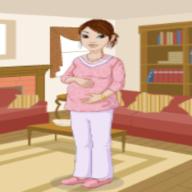以下是否Science的報章
1.Poisoning cases from Bindeez toy
2.Vitamin D is new hope against colon cancer
Science的報章
2007-11-22 2:28 am
回答 (2)
2007-11-23 2:46 am
✔ 最佳答案
Yes!Because Poisoning cases is about Science and Vitamin is about Science too!!
參考: me
2007-11-23 7:23 pm
1.Poisoning cases from Bindeez toy
The recent cases of children suffering GHB poisoning after ingesting the toy product, Bindeez beads, has highlighted the important role of poison centres, according to an article published online by the Medical Journal of Australia.
Dr Andis Graudins, Medical Director and Clinical Toxicologist at the NSW Poisons Information Centre, and his co-authors say the recent poisonings demonstrated how rapid electronic communication between health authorities around the world is crucial to sharing information in such cases.
The article examines two Australian cases of Bindeez poisoning and how the relevant health authorities responded.
"These cases highlight the important role of poison centres in toxicovigilance and monitoring of potential clusters of poisoning related to new pharmaceuticals and chemical agents," Dr Graudins says.
"Rapid electronic communication of these cases to worldwide toxicologic networks enabled health authorities to make a risk assessment of similar toy products overseas.
"So far, this has resulted in identification of similar suspected cases of GHB poisoning in children and international withdrawals of the product."
GHB was originally created in the 1960s as an anaesthetic agent but its current use is primarily as a recreational drug. It was banned in 2000 by the US Drug Enforcement Agency.
Symptoms from low dose GHB poisoning include vomiting, drowsiness, and disinhibition, while at higher doses coma, respiratory depression, and seizure-like activity may occur.
Routine urine toxicology screens do not detect GHB in their profile and there are no specific antidotes that reliably reverse GHB toxicity.
The Medical Journal of Australia is a publication of the Australian Medical Association.
Medical Journal of Australia
參考資料:http://www.medicalnewstoday.com/articles/89008.php
The recent cases of children suffering GHB poisoning after ingesting the toy product, Bindeez beads, has highlighted the important role of poison centres, according to an article published online by the Medical Journal of Australia.
Dr Andis Graudins, Medical Director and Clinical Toxicologist at the NSW Poisons Information Centre, and his co-authors say the recent poisonings demonstrated how rapid electronic communication between health authorities around the world is crucial to sharing information in such cases.
The article examines two Australian cases of Bindeez poisoning and how the relevant health authorities responded.
"These cases highlight the important role of poison centres in toxicovigilance and monitoring of potential clusters of poisoning related to new pharmaceuticals and chemical agents," Dr Graudins says.
"Rapid electronic communication of these cases to worldwide toxicologic networks enabled health authorities to make a risk assessment of similar toy products overseas.
"So far, this has resulted in identification of similar suspected cases of GHB poisoning in children and international withdrawals of the product."
GHB was originally created in the 1960s as an anaesthetic agent but its current use is primarily as a recreational drug. It was banned in 2000 by the US Drug Enforcement Agency.
Symptoms from low dose GHB poisoning include vomiting, drowsiness, and disinhibition, while at higher doses coma, respiratory depression, and seizure-like activity may occur.
Routine urine toxicology screens do not detect GHB in their profile and there are no specific antidotes that reliably reverse GHB toxicity.
The Medical Journal of Australia is a publication of the Australian Medical Association.
Medical Journal of Australia
參考資料:http://www.medicalnewstoday.com/articles/89008.php
收錄日期: 2021-04-23 22:37:09
原文連結 [永久失效]:
https://hk.answers.yahoo.com/question/index?qid=20071121000051KK02605


